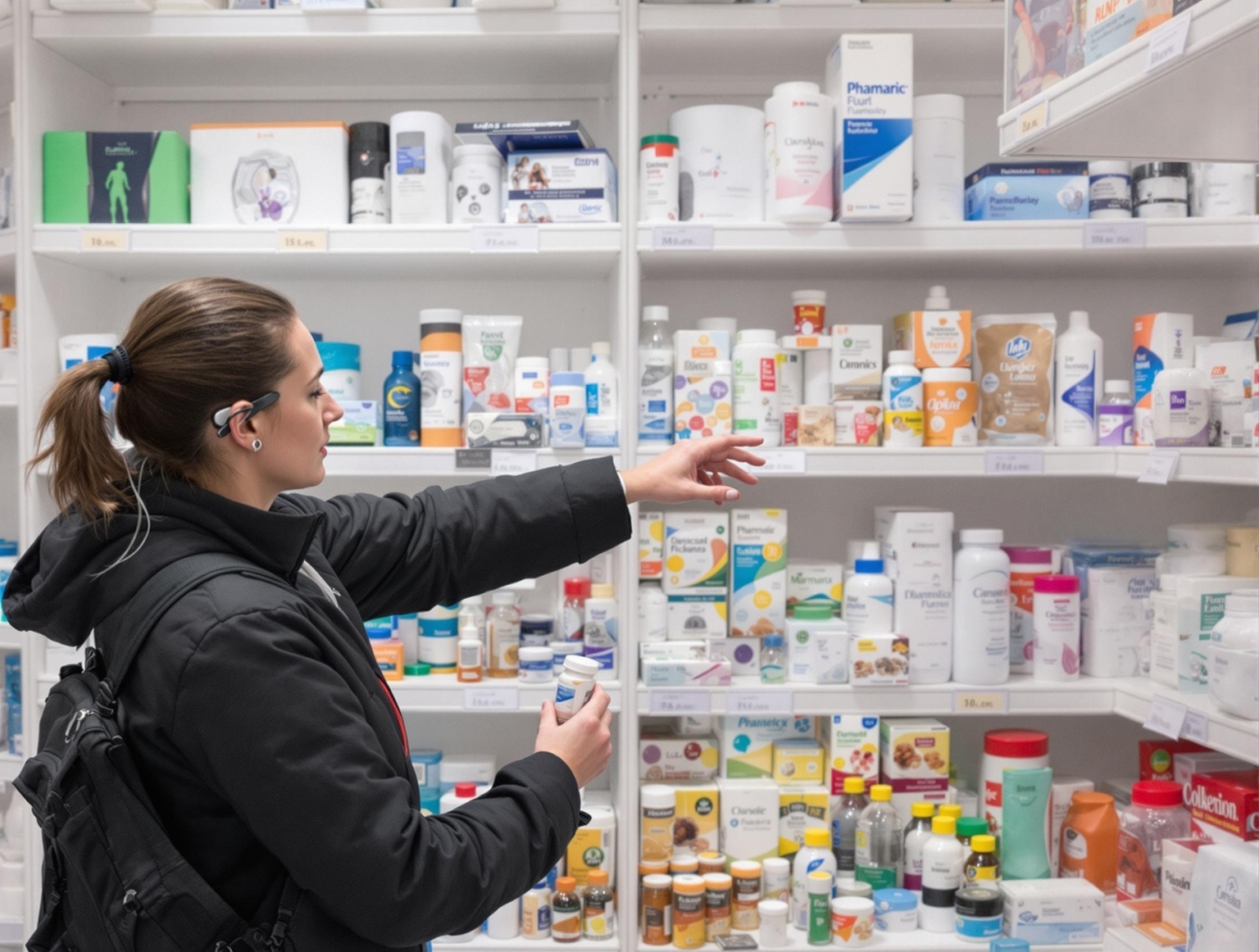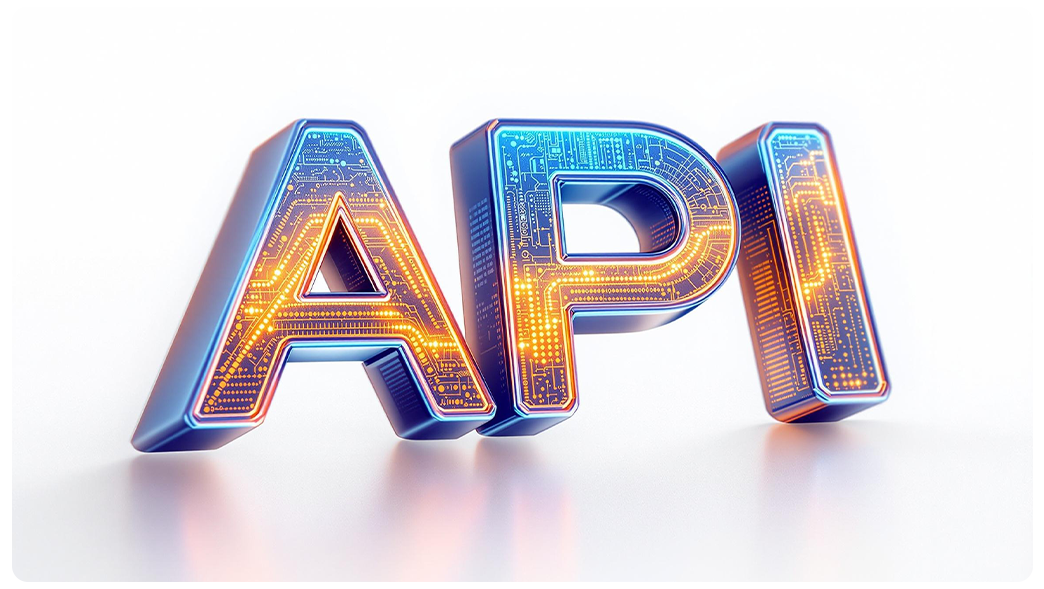Amidst the dual forces of an aging society and the rise of AI technology, pharmacy services are being reshaped by an emerging wave of innovation. Traditionally, elderly patients and those with chronic conditions need frequent in-person visits to pharmacies or hospitals for consultation, often encountering complex procedures, long wait times, and limited access to accurate health information. Now, with HA-GMIC01 Wearable Microphone from Hearit.ai, integrated into an intelligent AI system, we have a “whenever, wherever” voice interaction channel linking patients directly to professional pharmacists.
In this article, we explore 10 high-impact and immersive real-life scenarios demonstrating how HA-GMIC01 helps pharmacy members—particularly the elderly and chronic disease patients—overcome various conventional challenges and embrace an intelligent, more personalized healthcare experience.
1. Late-Night Discomfort: Instant Connection with the Pharmacy’s AI
Scenario
Nighttime can often heighten health-related anxiety, especially for seniors facing sudden discomfort who may struggle to pick up the phone or travel to a hospital. Equipped with the HA-GMIC01 wearable microphone on their collar, users can simply press its large, easy-access button to describe their symptoms to the AI system.
Leveraging past medical records and any available physiological data, the AI provides immediate advice and medication guidance, offering reassurance to both the patient and their family members.
Technical Insights
- Low-Power BLE Connectivity: Always on standby without cumbersome pairing procedures, ensuring prompt connection even at night.
- Voice Transcription & NLP: High-precision audio capture allows the AI to catch key symptom descriptors like “palpitations” or “dizziness,” reducing communication delays.
Value Proposition
- Delivers immediate, accurate medication guidance, alleviating emergencies and uncertainty.
- Reduces unnecessary nighttime hospital visits, freeing up essential medical resources.
2. Daily Medication Reminders: Prevent Missed Doses
Scenario
Patients with chronic illnesses often need scheduled, multi-dose medication regimes that span various times of day. Through HA-GMIC01’s integration with the AI system, the microphone can quietly vibrate or play a low-volume alert when medication is due. Patients respond via voice to confirm their dose or ask about the next scheduled dose, all without unlocking or searching through a phone interface.
Technical Insights
- Persistent Background Connection: The app syncs with the pharmacy’s backend medication schedule, triggering audio or vibration reminders right on time.
- AI Natural Dialogue: Users engage in simple voice queries without having to open specific apps or navigation menus.
Value Proposition
- Significantly enhances medication adherence among the elderly, minimizing missed and mistimed doses.
- Eases the burden on family members who no longer need to constantly remind patients.
3. One-Button Voice Interaction for Professional Drug Compatibility Advice
Scenario
A hypertensive patient suddenly develops a cold and wonders if standard cold medicine will clash with their blood pressure medication. Pressing the microphone button and asking, “Is it okay to take this cold medicine while on XX blood pressure meds?” prompts the AI to quickly retrieve information from a drug interaction database and expert pharmacist knowledgebase, responding in real time.
Technical Insights
- Knowledge Graph + Large Language Models: The AI utilizes a specialized medication interaction knowledge graph paired with NLP to pinpoint the user’s questions.
- Context Retention: If the user is uncertain about a response, they can continue with further clarifications, with the system maintaining context throughout.
Value Proposition
- Helps prevent harmful drug interactions or side effects caused by guesswork.
- Provides immediate answers regardless of pharmacy operating hours, expediting healthcare decisions.
4. Remote Audio-Visual Communication: Multi-Party Synchronization
Scenario
Many working-age children live apart from their elderly parents and cannot always be there in person. Meanwhile, the elderly may find it challenging to fully convey health conditions on their own. Through the HA-GMIC01 microphone linked with the pharmacy’s app, the AI automatically transcribes and distributes relevant health updates to family members.
For instance, the senior records a short voice note describing symptoms, and the AI sends both text transcripts and summaries to children who may also consult with the pharmacist based on the documented report.
Technical Insights
- Voice-to-Text & Collaborative Distribution: A single voice input is automatically converted into text and shared within the app, accessible to multiple family members.
- Tiered Access Control: Ensures seniors’ medical privacy is shared only with authorized individuals.
Value Proposition
- Reduces travel and miscommunication, enabling remote, real-time monitoring of a senior’s health.
- Streamlines multi-party collaboration and addresses information lag that can lead to delayed care.
5. Medication Process Monitoring and Voice-Based Double-Check
Scenario
A patient with kidney failure regularly partitions their weekly medications but fears mixing up dosage amounts. Via the wearable microphone, they ask, “Can you confirm I’m taking the correct 5 mg dose of my blood pressure medicine today?” AI cross-references their prescription data and returns a voice response.
Technical Insights
- Drug Verification: Spoken instructions and prescription logs match in real time; any mismatch triggers an alert.
- Continuous Dictation Mode: Users can systematically check multiple medications with minimal effort, ensuring correctness.
Value Proposition
- Reduces medication errors, crucial for elderly patients with multiple conditions.
- Boosts patient confidence in independent medication management, lowering dependence on external resources.
6. Access to Reliable Health Information: Countering “Miracle Cure” Misinformation
Scenario
Older adults often encounter misinformation about alternative remedies or health supplements. They can press the microphone button and ask, “Is this supplement genuinely effective for arthritis?” The AI taps into its evidence-based medical knowledge, explaining the product’s ingredients, potential benefits, or risks in understandable terms, filtering out unreliable claims.
Technical Insights
- Moderated Large Language Models: Ensures AI outputs align with current medical consensus and filters out unverified folk remedies.
- Configurable Content Templates: Pharmacy chains can enrich local knowledge bases to address region-specific supplements or traditional remedies.
Value Proposition
- Empowers elderly patients to base decisions on scientific evidence, avoiding risky or ineffective products.
- Reduces the chance of being misled by health scams or questionable therapies.
7. Multilingual Assistance: Supporting Foreign Caregivers
Scenario
In various countries, including Taiwan, elder care often involves foreign caregivers who face language barriers in communicating with pharmacists. HA-GMIC01’s real-time language translation and recognition features allow caregivers to speak in their native tongues while the AI translates queries into the local language, facilitating seamless pharmacist interactions.
Technical Insights
- Instant Translation: Leveraging robust multilingual models for on-the-fly speech conversion into Chinese text or voice.
- One-Button Language Switching: Users can toggle language modes via double-press or long-press actions, catering to multiple caregiver nationalities.
Value Proposition
- Overcomes linguistic barriers, enabling caregivers to articulate health questions and patient concerns effectively.
- Minimizes medication errors or delays due to misunderstanding, ensuring consistent cross-cultural care.
8. Intelligent Risk Detection: Proactive Alerts for Adherence
Scenario
Some chronic disease patients abruptly stop medication or show a decline in interaction with the AI system. By analyzing microphone usage patterns and medication logs, the system detects possible non-adherence and triggers reminders or notifies the pharmacy to follow up.
Such a mechanism preemptively flags health deterioration risks, prompting timely intervention.
Technical Insights
- Behavioral Data Analysis: The system correlates microphone interactions with medication schedules to identify abnormal adherence.
- Personalized Notification: Multiple risk levels can be set according to severity, with automated generation of an outreach list for pharmacists.
Value Proposition
- Early detection of medication lapses helps prevent complications or relapses.
- Transitions pharmacies from purely transaction-based services to proactive care management, extending the scope and value of services.
9. Eliminating Counter Service Wait Times: Remote One-Click Consultation
Scenario
Many medical queries require only a simple follow-up or drug-related advice, yet traditionally necessitate an in-person visit. By pressing HA-GMIC01’s button for “remote consultation,” patients can have their symptoms preliminarily assessed by AI. If necessary, the system escalates to a human pharmacist or online physician.
For mild or routine concerns, the pharmacist can finalize remote advice or e-prescriptions, drastically reducing the burden of travel and waiting, especially for older adults with limited mobility.
Technical Insights
- Layered Q&A Logic: AI handles common queries first. If symptoms go beyond standard cases, the system automatically upgrades to a real-time conversation with a pharmacist or doctor.
- Remote Prescription Management: Aligning with local healthcare regulations, the AI seamlessly coordinates medication dispensing.
Value Proposition
- Cuts back on unnecessary commutes and queuing.
- Lowers frontline staffing pressures, enhancing overall efficiency.
10. Warm, Supportive Interactions to Alleviate Stress
Scenario
Elderly and chronic disease patients often face psychological challenges such as anxiety or loneliness. The wearable microphone’s light and always-available presence provides a consistent “AI companion.” When users press the button to chat or express concerns, the AI responds empathetically and offers initial guidance or encouragement.
If heightened emotional distress is detected, the system can proactively notify a human pharmacist or family member to provide further support.
Technical Insights
- Emotion Recognition: Algorithms gauge negative or tense emotions within voice input, prompting a caring and reassuring AI response.
- Smart Escalation: Severe indications connect users to live pharmacists or relatives, blending AI prompts with human touch.
Value Proposition
- Offers continuous psychological reassurance, mitigating loneliness among isolated elderly.
- Enables pharmacies to extend services into a humanitarian dimension, strengthening trust and brand reputation.
Conclusion
Through the synergy of HA-GMIC01 Wearable Microphone and an intelligent AI pharmacy system, we witness the advent of a new healthcare ecosystem centered on real-time voice interaction and wearable technology. This approach harnesses medical data and professional pharmacist teams in the background, delivering accessible, on-demand medication services. Seniors and chronic disease patients can finally break free from the constraints of conventional, often fragmented consultation processes, gaining an empowered, personalized healthcare experience.
As BLE connectivity, large-scale AI models, and medical hardware continue to evolve, “ask anytime, get answers instantly” will become the industry standard, encompassing every stage of patient health management. At Hearit.ai, our mission is to create a closed-loop ecosystem around “Pharmaceutical AI + Wearable Hardware,” pursuing a balanced approach to both technology and user experience. We aim to provide greater safety, convenience, and warmth for anyone seeking professional guidance on their journey toward better health.





Leave a Reply
You must be logged in to post a comment.